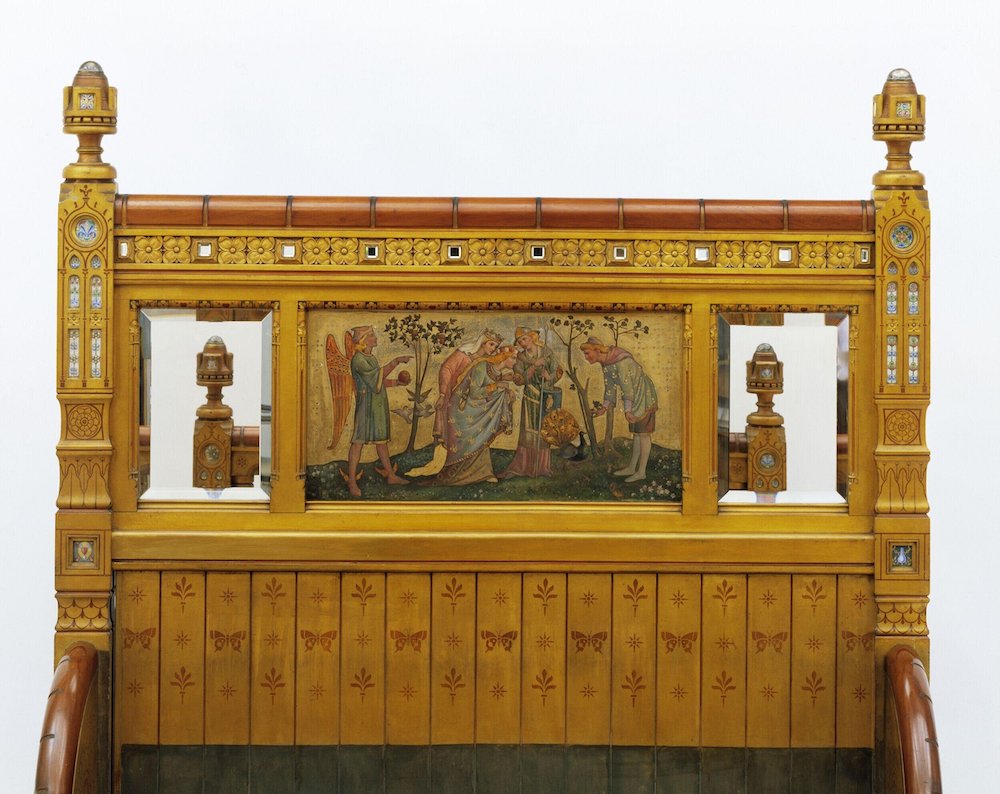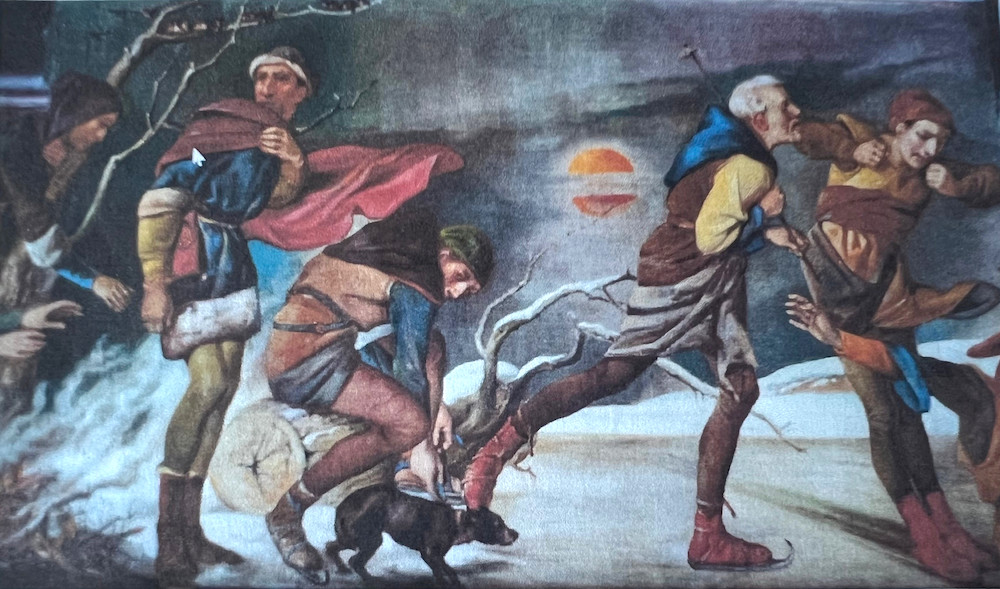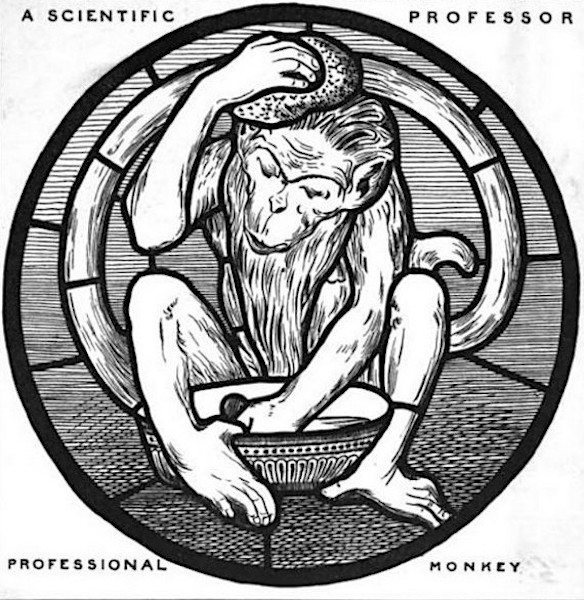Click on the coloured links for more information about the various items on the Victorian Web. Try clicking on the bullet points too, because these often contain links to more material on this website, and these links do not show up in colour. Clicking on the author's name will also lead to more information about her. — JB.
Oil Paintings and Watercolours
Fred Weekes's paintings are often sold at auction. They mainly feature horses, men in uniform, battle scenes and so on, but a few are landscapes and social realist scenes.
Art Work for William Burges
Fred Weekes worked on many pieces of art furniture designed by William Burges for his own use, for instance at his last home, Tower House in Melbury Road, Kensington. The furniture included:

This had originally formed part of a glazed panel in Burges's rooms at 15 Buckingham Street, London. Although it is at Knighthayes Court at present, it belongs to the collections of the Victoria and Albert Museum, London.
Fourteen people added their expertise to the bed. Weekes designed the end panel on the right hand side titled "harpies." In 1878 the book case fell over, damaging images above the Indian marble shelf. These were replaced by a band of decoration made up of allegories in eight different metals.
This was originally painted by Fredrick Smallfield. However, Weekes renewed the lettering and added the border decoration.
This is probably the work of Weekes, or of someone copying his style.
Art Work, Including Stained Glass, for Various Prestigious Establishments, for Burges and Others
In 1866, the 3rd Marquess of Bute employed Burges to redesign the castle. Weekes is credited with the frieze depicting the "Labours of the Four Seasons." In 1870, he drew up the cartoons for the stained glass windows: six cartoons of the Norse Gods after whom the Saxons named the days of the week. Sunday was represented by a carved stone in the shape of the sun.
Weekes and Fredrick Smallfield (1829-1915) were also responsible for the painted Zodiac tiles in the Summer Smoking Room.
William Frame (1848-1906) assisted Weekes in painting the panels of Bute's sitting room door in Bute Tower.

Comparisons have been made between the Insole Frieze around what is now the Reading Room, and the Winter Smoking Room frieze at Cardiff Castle. Both depict the "The Labours of the Four Seasons." The Insole frieze has what is thought to be a self-portrait of Weekes as a grey-haired man ice-skating (as shown in the author's photograph on the right); his monogram is featured on a pouch attached to another of the figures depicted; and his full name appears unmistakeably under a scythe in the section showing the tasks of summer.
Burges designed 74 windows for the Cathedral, all but 3 painted by H.W. Lonsdale, 1844-1919. But Weekes contributed the three central apse clerestory windows, and a painted figure of Christ as King Crucified. Weekes also executed some of the painted decoration in the cathedral, assisted by Campbell, Smith & co.
Weekes was responsible for many works including:- richly coloured murals depicting medieval scenes, and breathtakingly vivid stained glass panels, "The Dinner," in the dining room, showing a romanticised view of medieval peasants gathering food, and "The Seven Ages of Man," circular in shape with 7 smaller circles around it.
Weekes designed the large hall window, as recorded in the Building News of 1881. This window is still in situ at Finchley Golf Club.

Weekes designed three circular stained glass windows in the bathroom featuring comical monkeys, one window showing a monkey with hair brush and mirror, another showing a monkey with bowl and sponge, washing his head, and a final one showing a monkey with mirror and shaving brush (the one shown on the right, from the Building News of 23 July 1886, is cheekily lablled "Pofessional Monkey" — a "Scientific Professor"). Three windows from the drawing room, "The Lovers," depicting morning, noon and night, are also attributed to Weekes: exactly the same designs were used at Nether Court.
Bibliography
Crook, J. Mordaunt. The Dilemma of Style: Architectural Ideas from the Picturesque to the Post-Modern. Chicago: University of Chicago Press, 1987.
Crook, J. Mordaunt. William Burges and the High Victorian Dream. Rev. ed. London: Fances Lincoln, 2013.
Edwards, Clive. Collinson and Lock: Art Furnishers, Interior Decorators and Designers, 1870-1900. Market Harborough, Leics.: Troubador, 2022.
McLees, David. Castell Coch. Cardiff: Cadw (Crown Copyright), rev. ed. 2005.
Muthesius, Stefan. The High Victorian Movement in Architecture, 1850-1870. London: Routledge, 1972.
Newman, John, et al. Glamorgan (Buildings of Wales, Vol. 3). New Haven: Yale University Press, 1995.
"Nun's Acre, Goring." Building News and Engineering Journal [scroll down to Vol. 51 (July-December 1886); unfortunately, no page number appears]. Google Books. Free ebook. Web. 16 October 2025.
Williams, Matthew. William Burges, 1827-81. Andover, Hants: Jarrold Publishing (Pitkin Guide), 2007.